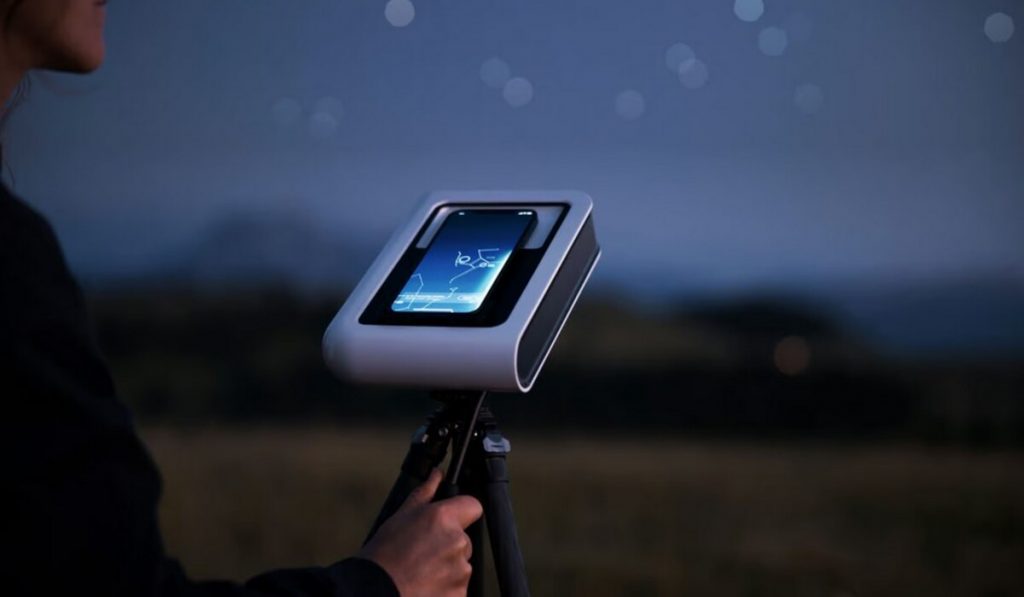Vaonis, a French smart telescope maker, has created Hestia, a compact telescope that lets you use your smartphone’s camera to photograph stars. Like their previous smart telescope, Vespera, Hestia is seeking funding on Kickstarter. It’s backpack-friendly, measuring 17 x 25 x 5.5 cm and weighing only 500g, making it portable and lightweight.
“The Stellina and Vespera smart telescopes have been worldwide successes since their launch,” said company founder, Cyril Dupuy. “This year, we are pushing back the limits of miniaturization with a new innovation: Hestia. To reduce costs and offer a telescope that is truly accessible to all, we have relied on the most powerful and widely adopted technology: your smartphone.”
The telescope uses 30-mm optics with six lenses in three groups. Light enters the system and is directed by prisms towards the camera on the back of your smartphone. You can achieve up to 25x magnification with the help of removable magnets that align your smartphone’s main camera with Hestia’s eyepiece.
The telescope’s specifications, such as sensor size and image quality, depend on the smartphone used with it. The setup works in conjunction with a mobile app that utilizes special processing algorithms to combine multiple short-exposure images into one enhanced view of the night sky.
The app also provides an interactive sky map to help you locate interesting celestial targets and position the telescope for the best results. For those new to stargazing, there’s a library of astronomical information available through the app.
The Hestia can also be had with a solar filter to make sunspots visible, and “help you understand the Sun’s behavior, its influence on space weather, and its impact on our planet.”
Early bird Kickstarter pledges for Hestia start at US$149, and additional costs apply for the adjustable tripod, solar filter, and hard case bundles.
While the crowdfunding campaign is already funded, shipping is estimated to begin in December. This gives skygazers plenty of time to prepare for the April 2024 total solar eclipse, which is expected to be visible to over 80% of people in the US. You can find more information in the video below.

